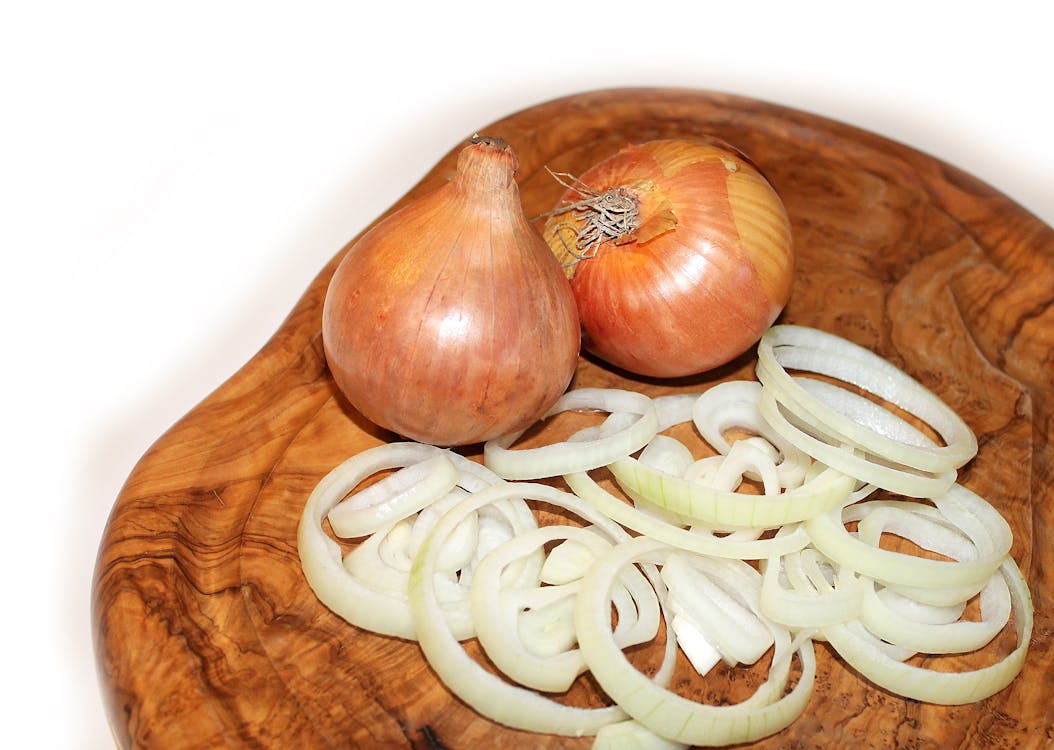Written by Dr. Gloria Ku, DVM
 This is not a simple question, but one we often get, and
struggle with just as our clients do. As
veterinarians, we should know more than the average person about how to feed
your new puppy, or your mature dog, but that also makes it difficult because
there is a lot of information to process in this question!
This is not a simple question, but one we often get, and
struggle with just as our clients do. As
veterinarians, we should know more than the average person about how to feed
your new puppy, or your mature dog, but that also makes it difficult because
there is a lot of information to process in this question!
While ingredient lists are often the first place a consumer will
look to assess a diet, it is not the last place one should look. Ingredient lists can be misleading when we
try to oversimplify what they are telling us.
Here is a “glossary” of terms used in the pet food industry:
There are several factors that must go in to deciding which diet
is best to feed. And the choices are
plentiful. Like us, the same diet is
rarely the best diet for ALL dogs, but at the same time, there are guidelines
that will help you figure out where to start, and it is highly possible that
your dog will do well on a diet that the majority of dogs will do well on,
statistically speaking.
Factors that I consider critical to the decision are nutritional
support [e.g. does the diet meet minimum standards for nutrition established by
AAFCO (Association of American Feed Control Officials)] which is an association
of local, state and federal agencies that regulate animal feed sales and
content. It is a minimum standard that
all diets should satisfy and ”AAFCO Approved” should be part of the label
somewhere. In the past, when generic dog
food was first introduced on the market, these standards were not met and
deficiencies surfaced causing serious health problems. This should be the minimum you should ask of
your diet.
Beyond the minimum nutritional value, the considerations become
more subjective, assuming your pet does not have a specific medical condition
dictating a “low fat” or "limited ingredient” diet for example. For most of us, we are looking for a diet
that is humanely produced, has some evidence based research that it will keep
our dogs healthy, help them to have normal stools and a nice healthy coat, keep
their teeth and bones strong and healthy, one that they will enjoy eating, and
we will find convenient to buy and feed, at a reasonable price. No small order!
 For some it is also important to avoid a lot of additives and
preservatives, but there are trade offs to having commercially produced foods
without adequate preservation. With this
comes a higher risk of spoilage which can drive up expense associated with how
it is handled in manufacturing and delivery, storage, etc. Raw diets in particular have the added risk
of bacterial contamination that can be harmful not only for your dog, but for
sensitive family members as well.
For some it is also important to avoid a lot of additives and
preservatives, but there are trade offs to having commercially produced foods
without adequate preservation. With this
comes a higher risk of spoilage which can drive up expense associated with how
it is handled in manufacturing and delivery, storage, etc. Raw diets in particular have the added risk
of bacterial contamination that can be harmful not only for your dog, but for
sensitive family members as well.
A lot of diets now include supplements like glucosamine for
joint health, or increased protein which we often associate as higher quality
calories, or “natural” sourced ingredients, or more omega 3’s. Many of these sound beneficial, and I won’t
say they aren’t, but sometimes the marketing is more powerful than the
evidence. In the case of glucosamine,
for instance, there is typically not sufficient concentrations to be helpful.
Evidence based efficacy, such as actual feeding trials for dogs to prove any
benefit, may be lacking altogether.
Often the value of an ingredient is inferred because people have heard
that it could be helpful for themselves,
or there was one study that showed possible benefit in another species
(like mice or humans) but not dogs. One
has to be a little cautious of this type of data. “Grain free” is another popular marketing
label that has recently been shown to potentially lead to heart disease in some
dogs.
Often larger, more established companies have the advantage of
having the resources to do feeding trials and nutrition research. They utilize
sophisticated scientific analysis as well as expertise from PhD nutritionists,
food science experts, microbiologists and animal science research to help formulate
diets that are designed to be nutritionally appropriate, palatable to most
animals who are fed it, and convenient for consumers to use. While there are a host of smaller, boutique
companies that also make pet food, many of them do not have the resources to
perform feeding trials over many years, or have laboratories that can help with
quality control and nutritional analysis.
They will often rely on research performed by or funded by other
companies in order to meet the AAFCO minimum standards and have a starting
place from which to make other adjustments.
This is not necessarily a bad thing, but just important to
recognize.

Finally there are many who feed home cooked meals to their
pets. While this may feel healthier to
some than feeding processed kibble, it is not easy to meet all requirements in
today’s world from grocery store ingredients.
UC Davis has a wonderful nutrition department that will help you
formulate a balanced diet for your pet, but recipes can be expensive (on the
order of $225/recipe) to have formulated.
Beyond that, it is difficult to create a balanced diet, despite the fact
that there are published recipes online… As we all know, putting it out there
is easy. Taking responsibility for your
pet’s well being is not as easy.
So, at the end of the day, what should you feed your dog?? There is no one answer! How food is sourced in todays society will
definitely affect your choice. I try to
look for a middle ground. I like the
convenience of feeding kibble and I think my dog’s stool is more formed and
consistent on kibble. I like that a
trusted company has done feeding trials and has some scientific based evidence
that I will be meeting her nutritional needs as a canine. But I confess, I also prepare organic bone broth and sometimes
add a little extra organically humanely raised meat topper to her prepared food to increase her
appetite, and complement her prepared diet.
When I cook for her I add a little black pepper to aid with digestion,
celery to help her appetite, turmeric for her arthritis, and lots of love. All in small amounts., except for the love of
course. I don’t worry about whether the
bag says chicken meal or pork by products because as the glossary explains,
that just means there is liver and intestines and not just “meat” which is
actually more nutritious. As one
nutritionist pointed out, in many countries these are actually what humans also
value and consume. While theoretically it could include feathers or
other “by-products”, these aren’t intended ingredients because there isn’t
nutritional value in them, and if you read the glossary, they are intentionally
and mandated to be excluded. If bone
meal is her source of calcium that is no worse nor better than ground calcium
carbonate from sea shells to me. If
there are preservatives to help her kibble remain fresh and prevent spoilage, I
accept that as I often do in my own diet in order to avoid gastrointestinal
upset. Do I want her to live forever,
you bet!!
 I do encourage you to look at what you are feeding, read the
labels and understand their limitations as well, evaluate your dog’s response
to your choice and if necessary, change and re-evaluate again. But do so gradually, with consideration, and
with the help of your veterinarian. We
may not know everything, but we have studied this issue at length, and will try
to bring perspective and guidance to our answers. Because we want your
dog to live forever too! :)
I do encourage you to look at what you are feeding, read the
labels and understand their limitations as well, evaluate your dog’s response
to your choice and if necessary, change and re-evaluate again. But do so gradually, with consideration, and
with the help of your veterinarian. We
may not know everything, but we have studied this issue at length, and will try
to bring perspective and guidance to our answers. Because we want your
dog to live forever too! :)
 Grapes and raisins could be potentially toxic to dogs, and probably cats as well. It is currently unknown what part of the grape causes renal failure, but some animals are particularly sensitive to ingestion of grapes and raisins, to the point that a small amount can lead to kidney failure in some susceptible animals. Not all dogs and cats are susceptible, but those that are can become very ill. Until more is known about this potential danger, it is best to avoid giving them to your pet in appreciable amount, and to be sure they are not available through refuse containers, countertops and well-meaning visitors.
Grapes and raisins could be potentially toxic to dogs, and probably cats as well. It is currently unknown what part of the grape causes renal failure, but some animals are particularly sensitive to ingestion of grapes and raisins, to the point that a small amount can lead to kidney failure in some susceptible animals. Not all dogs and cats are susceptible, but those that are can become very ill. Until more is known about this potential danger, it is best to avoid giving them to your pet in appreciable amount, and to be sure they are not available through refuse containers, countertops and well-meaning visitors. And don't forget about onions. Onions (and garlic) contain a chemical which both dogs and cats are susceptible to that can cause severe anemia and blood in the urine. Whether or not onions are cooked does not necessarily lessen the toxic effect, and ingesting as little as 0.5% per kg body weight can be toxic. That translates to less than 1 tablespoon for a 5 lb. pet (e.g. Chihuahua), 1/4 cup for a 20 lb. pet, and 2/3 cup for a 60 lb. pet. Dogs and cats are likely to eat more if onions are cooked because they often carry the flavor of whatever they were cooked in as well. Kittens and cats seem especially susceptible to the toxic effects and can be affected by onion and garlic powders. The anemia can be profound and may even require a transfusion. The effects tend to be most pronounced 2-4 days after ingesting onions, and can be cumulative too (i.e. smaller amounts on a regular basis can also lead to toxic effects). Garlic is less likely to be consumed in larger quantities, but again, when used in cooking they can be ingested in larger amounts more readily.
And don't forget about onions. Onions (and garlic) contain a chemical which both dogs and cats are susceptible to that can cause severe anemia and blood in the urine. Whether or not onions are cooked does not necessarily lessen the toxic effect, and ingesting as little as 0.5% per kg body weight can be toxic. That translates to less than 1 tablespoon for a 5 lb. pet (e.g. Chihuahua), 1/4 cup for a 20 lb. pet, and 2/3 cup for a 60 lb. pet. Dogs and cats are likely to eat more if onions are cooked because they often carry the flavor of whatever they were cooked in as well. Kittens and cats seem especially susceptible to the toxic effects and can be affected by onion and garlic powders. The anemia can be profound and may even require a transfusion. The effects tend to be most pronounced 2-4 days after ingesting onions, and can be cumulative too (i.e. smaller amounts on a regular basis can also lead to toxic effects). Garlic is less likely to be consumed in larger quantities, but again, when used in cooking they can be ingested in larger amounts more readily.


































